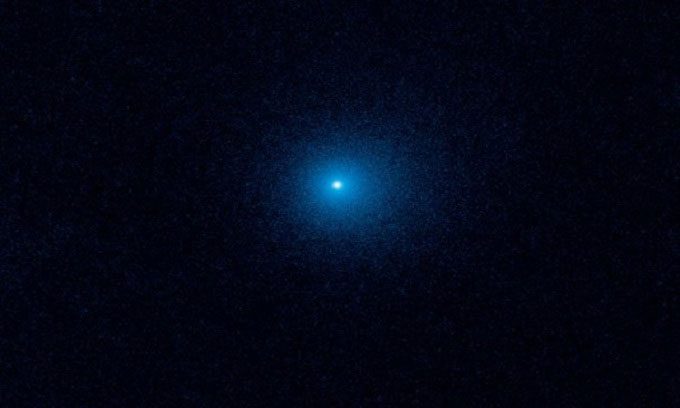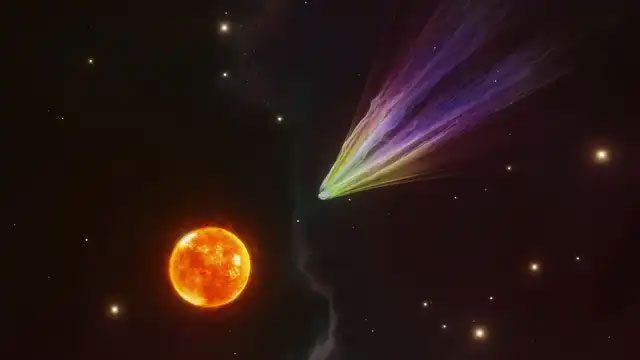Comet C/2017 K2 is larger than the asteroid that wiped out the dinosaurs and is heading towards Earth, potentially observable with small telescopes.

Comet C/2017 K2 captured in 2017 by the Hubble telescope. (Image: NASA)
Comet C/2017 K2 was discovered in 2017 by the Pan-STARRS telescope in Hawaii and monitored by the Hubble Space Telescope in the same year. At that time, this comet set a record as the most distant active comet, located 2.4 billion kilometers from the Sun, beyond the orbit of Saturn.
At that point, C/2017 K2 developed a tail nearly 129,000 kilometers wide as it approached the Sun. In other words, the dust cloud of this large comet is nearly the size of Jupiter. Five years later, the comet is now closer to Earth and will pass by the planet in the coming weeks. It will reach its closest point to Earth on July 14, according to EarthSky. However, C/2017 K2 will still fly farther from Earth than Jupiter and cannot be observed with the naked eye. This comet will continue its trajectory towards the Sun, reaching its closest point to the star in December 2022.
Scientists are uncertain about the size of C/2017 K2, but it is likely to be gigantic. Initial observations confirm that the comet is 160 kilometers wide, larger than the asteroid that caused the extinction of the dinosaurs. On July 14, it will be near the globular cluster Messier 10.
Accordingly, we can watch the comet’s journey online by following the live webcast of the Virtual Telescope Project, starting at 6:15 PM (2215 GMT) on July 14. Additionally, you will also be able to view it on Space.com, with support from the project.

C/2017 K2 (PanSTARRS) was in the constellation Draco from July 2007 to August 2020. As of June 2022, the 3-sigma uncertainty in the comet’s current distance from the Sun is ± 5000 km.
Initial observations indicate that the comet has a large nucleus and a massive cloud of gas. According to observations and data from the Canada-France-Hawaii Telescope (CFHT), the nucleus of K2 may range from 30 to 160 kilometers wide; however, data from the Hubble Space Telescope suggests that the “giant” nucleus of this comet is only 18 kilometers.
Therefore, when this comet approaches Earth, it will provide a great opportunity for professional observatories to measure just how large the nucleus actually is.
As the comet continues to move inward towards the solar system, it is also becoming increasingly bright. During its closest approach on July 14, the comet is expected to be much brighter than it is now; however, it is unfortunate that it will still be too faint for the human eye, making it difficult to track directly. K2 will remain within the view of telescopes throughout the summer before heading towards the Sun, which will occur on December 19.
Over the past five years, K2 has been continuously moving towards Earth. This comet is primarily composed of frozen gas, rock, and dust, and will become more active as it approaches the Sun; the Sun’s warmth rapidly heats the comet, causing its solid ice to turn directly into gas and form clouds surrounding the comet.
Interestingly, K2 was already active when it was first discovered in 2017 between the orbits of Saturn and Uranus, about 2.4 billion kilometers from the Sun—approximately 16 times the distance from Earth to the Sun.
Essentially, comets are icy bodies of rock, dust, and frozen gas orbiting the Sun. Whenever they come close to the Sun, they warm up, ejecting dust and gas into space. This dust and gas cloud creates the characteristic tail of the comet. Comets are relatively rare compared to asteroids and meteoroids. According to NASA, there are currently 3,743 known comets. Only a few comets can be observed with the naked eye, such as Comet Hale-Bopp and Comet Hyakutake.





















































